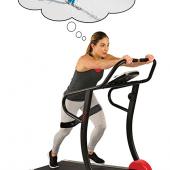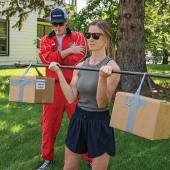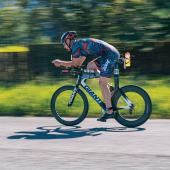Strengthening Season
Six ways to restore optimal fitness.
Every season, success comes down to how well you prepare your body and mind to withstand (and maybe exceed) the demands of your favorite outdoor activity. Each and every sport has its own set of critical demands which place excessive stress on joints, muscles and tendons, ligaments, cardiovascular system, as well as the brain and nervous system. With a consistent, progressive, and comprehensive training plan, you can improve strength and conditioning and considerably reduce the risks for a season-ending injury, hopefully reaching new heights and achieving new goals.
Dynamic, full-body warm-up
By increasing blood flow to muscles and tendons, optimizing joint lubrication, and exciting the neuromuscular system, we can greatly reduce damaging stress to our bodies. Spending ten minutes on a controlled and comprehensive full-range-of-motion warm-up, we reduce the risk of muscle strains, ligament sprains, and damaging forces to our joint cartilage. Before heading out for that early-morning run or ride, try some push-ups and arm circles, squats, heel raises, a light jog forward and backward, and grapevine to the left and right.
Resistance training
With the use of weights and bands, we can improve the strength and efficiency of our neuromuscular system. Resistance training increases muscle activation and our resting metabolic rate, which burns more calories throughout the day. Research supports a specific and customized resistance-training program for athletes of any age.

Sport-specific training
Every sport has its own specific demands and list of common injuries. From kayaking to golf to fly fishing to rock climbing, as the days get longer and warmer we all want to get outside and enjoy our favorite sports. But the shoulder strain and core-engagement of kayaking are considerably different than the demands needed to train and run the Bozeman Marathon. Therefore, training should help the body gradually adapt to the requirements of each sport and involve movements that simulate the strength and patterns required for that sport.
Cardiopulmonary training
Your heart and lungs provide and deliver the two most important substances for all athletes: blood and oxygen. Through consistent and progressive training, the efficiency of this system will adapt—a vital part of all training programs. Monitoring and analyzing heart rate and blood pressure gets easier every year with advancements in technology.
Stretching
Spend 5-10 minutes after every workout, run, or ride stretching your legs, back, chest, shoulders, and arms. This reduces the chance of future injuries and aids in recovery.
Nutrition
Fuel your workouts with the proper nutrients if you truly want to see real gains and keep the body finely tuned. Plenty of water and balanced protein, carbohydrate, and fat intake will provide all the energy and building blocks needed for you to reach your goals and reduce the risks for season-ending injuries.
John-Henry Anderson, PT, DPT, SCS, CSCS is a doctor of physical therapy and board-certified Sports Clinical Specialist as well as a Certified Strength & Conditioning Specialist with Advanced Performance & Rehabilitation Services in Bozeman.











